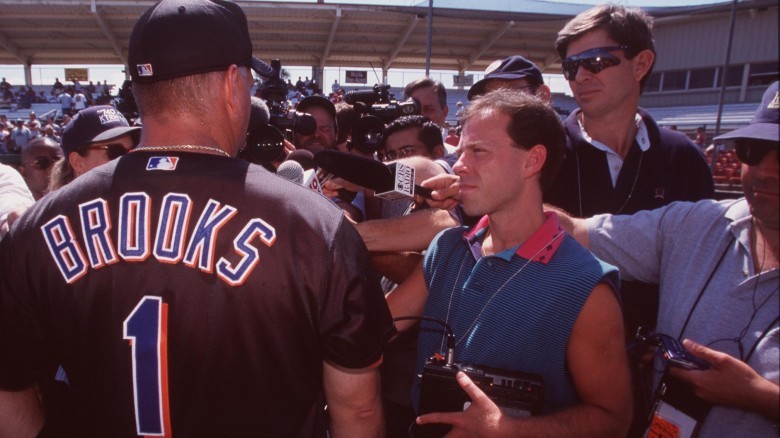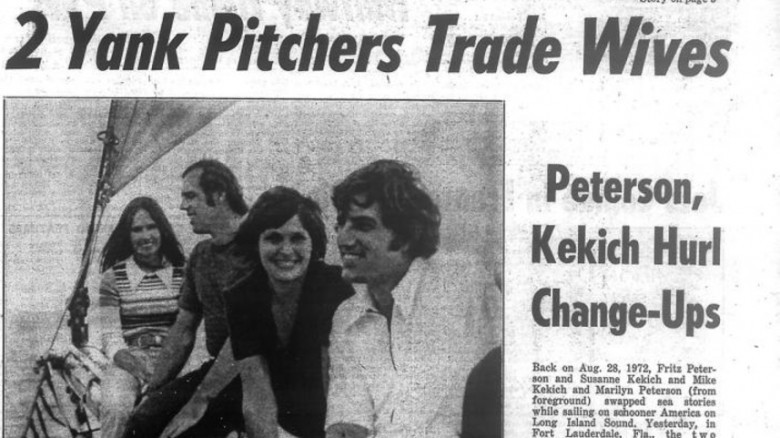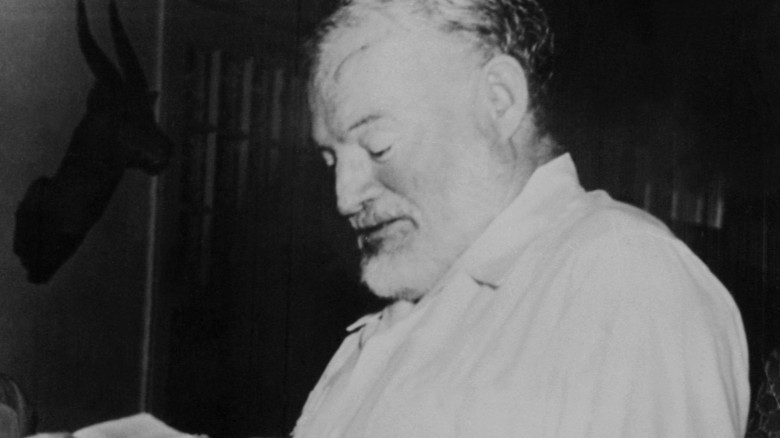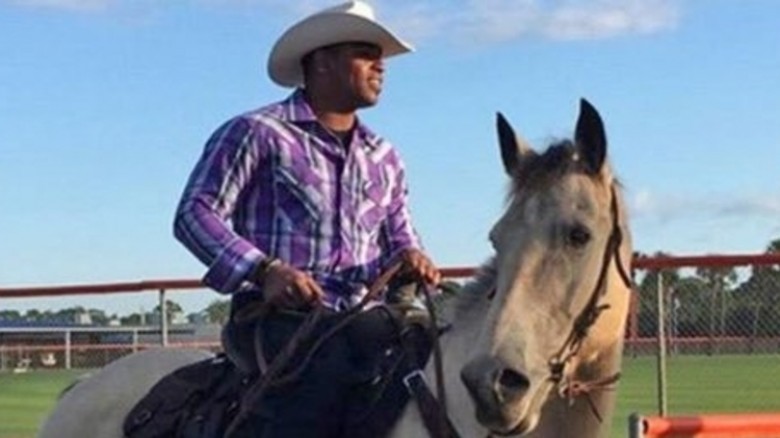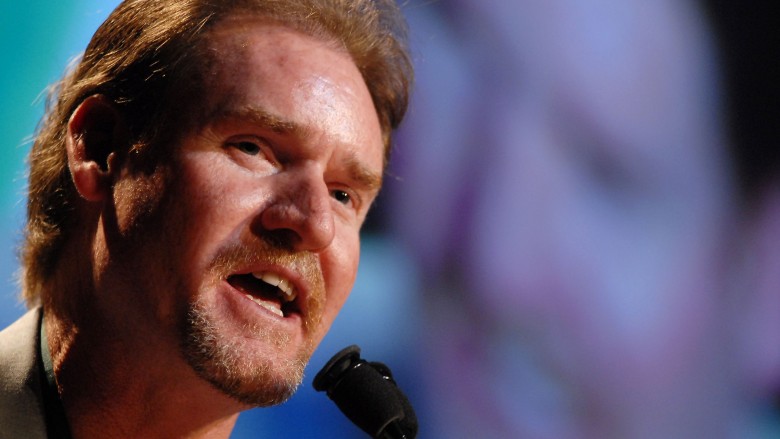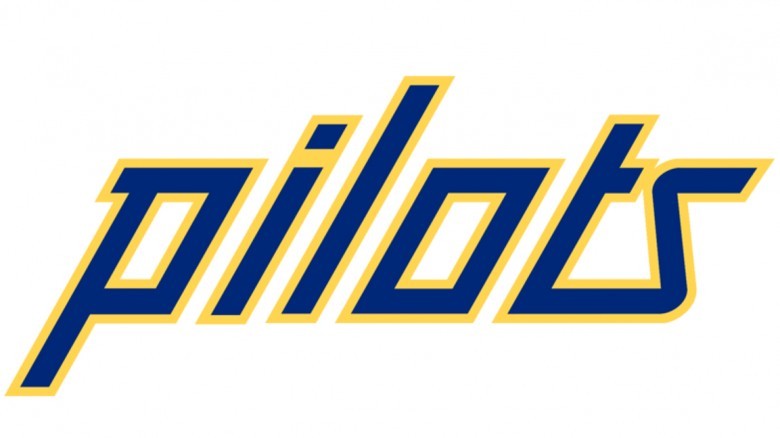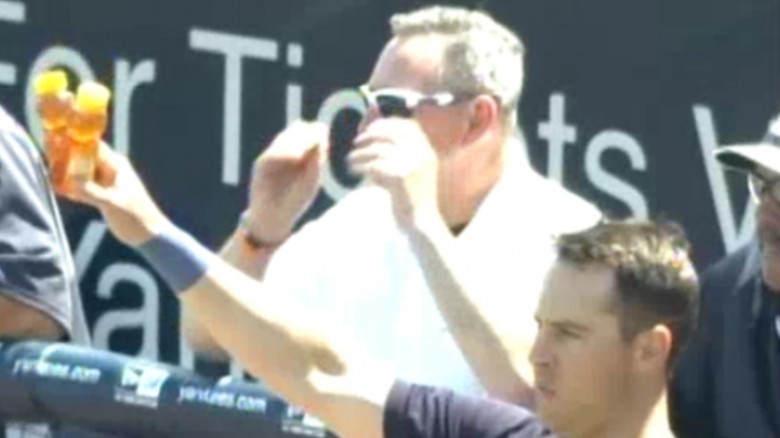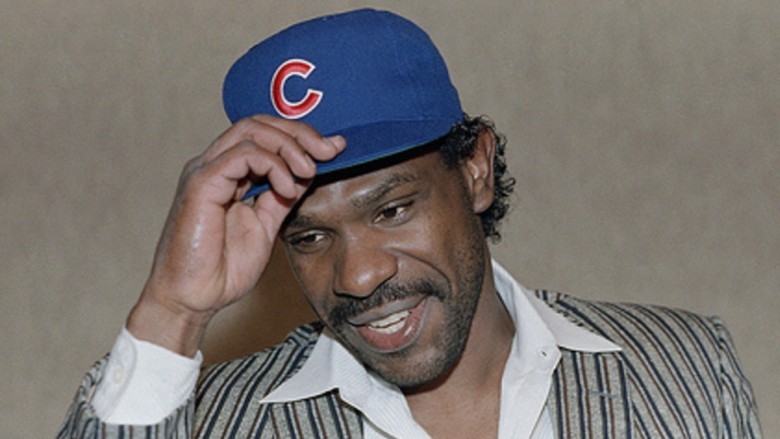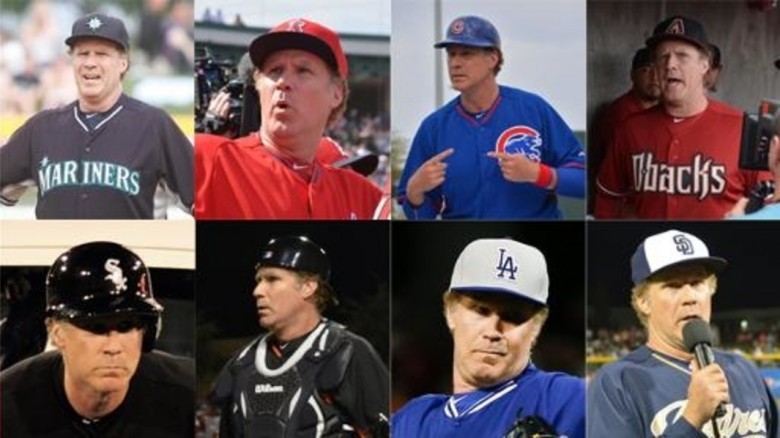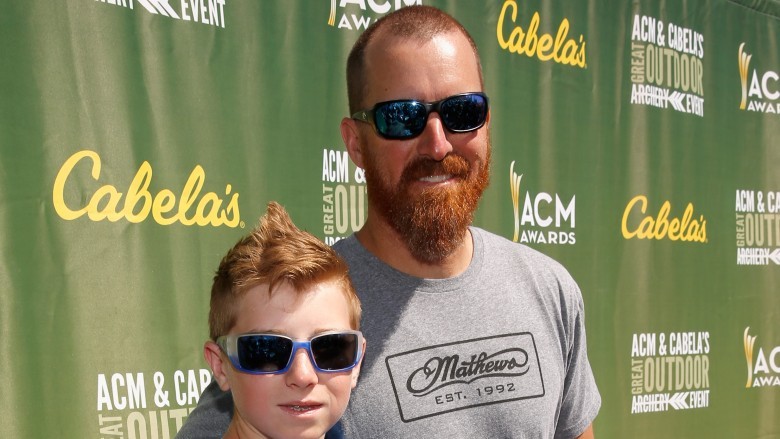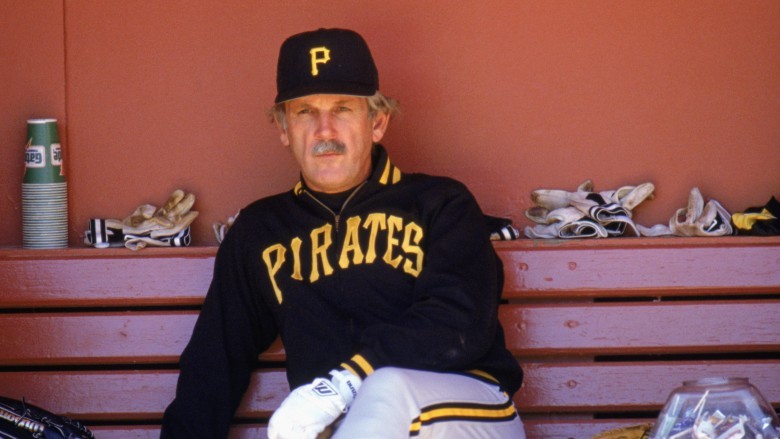Weirdest Things To Happen During Baseball\'s Spring Training
Maybe it's something about the quieter pace of Major League Baseball's spring training that makes it the "silly season," but a lot of bizarre things happen every spring. It's not just lazy, meaningless games played in front of a few thousand people on a good day — Spring Training is way goofier than that:
Two Yankee pitchers swap families
On March 4, 1973, two New York Yankees pitchers made one of the most bizarre announcements in spring training ‒ and baseball ‒ history. Starters Fritz Peterson and Mike Kekich announced that they had engaged in a trade of their own that previous summer. After feeling a connection at a party at sportswriter Maury Allen's home, Peterson had moved in with Kekich's wife Suzanne and their two daughters, while Kekich had been living with Peterson's wife Marilyn and the couple's two sons. (What sounds more bizarre to today's ears: wife-swapping, or ballplayers socializing with sportswriters?)
Peterson told the media that he hoped they wouldn't "make anything sordid out of this." Good luck with that when it comes to sportswriters. Added Kekich, "Unless people know the full details, it could turn out to be a nasty type thing. Don't say this was wife-swapping, because it wasn't. We didn't swap wives, we swapped lives." No kidding — they even swapped dogs. Eh, a biscuit-giver is a biscuit-giver.
"We may have to call off Family Day," team GM Lee MacPhail joked then. Or perhaps not — Kekich and Peterson's wife had already split up by the time of the announcement. But Peterson married Suzanne Kekich in 1974, and they are still together. It's always nice when the sordid and weird get a happy ending.
The old man and the team: Ernest Hemingway spars with a Dodgers pitcher
In 1942, as the United States was in the early stages of World War II, the Brooklyn Dodgers held their spring training in Havana, Cuba. Michael D'Antonio's book Forever Blue talks about how a celebrity fan by the name of Ernest Hemingway befriended the players, watching the workouts and inviting him to shoot both clay and live pigeons with him. One night, Hemingway had some Dodgers over to his home for drinks. They discussed the war, and he gave them autographed copies of his book From Whom the Bell Tolls.
Then the evening turned darker. After having knocked back (way, way more than) a few, Papa challenged relief pitcher Hugh Casey — the player closest to his 6 foot, 200+ pound frame — to a boxing match. Casey tried to beg off, as he was 14 years younger, a lot fitter, and had boxing experience. "He didn't want to show up the man in his own house," D'Antonio wrote. It's hard not to feel for Casey's tough spot there, but Hemingway insisted on boxing the ballplayer — after the two laced up their gloves, Casey ended up destroying him (and a bookcase) in the tussle.
Ironically, the two men's lives ended in a similar way. On July 3, 1951, after a groupie accused him of fathering her child, and a court agreed with her, Casey killed himself with a shotgun while "talking to his estranged wife Kathleen on the phone," according to Hardball Times. Just one day shy of a decade later, Hemingway would lend his life with a shotgun as well.
Cespedes and the horse he rode in on
Mets outfielder Yoenis Cespedes is known both for being really good at basebll, and for being a little, well, flamboyant and showy. Not only did he get the Mets into the World Series in 2015, during his first season with the team, but the Cuban native brought along a sense of style, with his neon yellow sports sleeve, chosen to match the color of a parakeet that showed up in Citi Field that summer.
But that was just a prelude to the way Cespedes entertained reporters with his rides to Mets spring training the next year. He showed each day for the first week in a different car, from a massive Ford monster truck, to two different Polaris Slingshots that each looked like the Batmobile, to a Lambourghini. Then he capped off his week by showing up on a horse dressed in full cowboy gear. His teammate, Noah Syndergaard, rode in with him on a separate steed.
In 2017, Cespedes is continuing to show up in cool cars, but he hasn't ridden to work on an animal. Yet. Maybe showing up on a llama is his next stunt?
Margo Adams, Wade Boggs' former mistress, humiliates him in Penthouse magazine
In the summer of 1988, Margo Adams, who had been having a long-term affair with Boston Red Sox star Wade Boggs, sued him for $6 million in palimony after their relationship ended, claiming he had promised to take care of her. The former mortgage broker and the ballplayer first met in 1984 in an Anaheim, CA bar called Animal Crackers, she said, and she traveled with him as his road-trip girlfriend on 64 trips for the next four seasons. Boggs eventually admitted to the affair, but said he never promised to provide financially for her, other than paying her travel expenses.
The following spring training, Adams upped the ante — and the embarrassment factor. After getting $500,000 to pose in Penthouse magazine, she revealed that Boggs said that Jim Rice "thinks he's white," called Roger Clemens "Mr. Perfect," and told her about his teammates' sexual shenanigans. Perhaps most distressingly of all, Adams said that Boggs "could recite almost every line of The Wizard of Oz in all those cute voices." The couple settled their lawsuit in 1989 for an undisclosed amount, but if only Boggs had had a brain not to get involved with her in the first place.
Seattle Pilots' equipment truck doesn't know whether to go to Seattle or Milwaukee
The Seattle Pilots were part of MLB's 1969 expansion, but had financial problems from the beginning, starting with them playing in a decrepit place aptly called Sick's Stadium. (What a name!) The most (make that, only) memorable thing about that season was that one of the players was former New York Yankee pitcher Jim Bouton, who happened to be writing his legendary book Ball Four about that year.
So Bud Selig, a Milwaukee used car dealer who wanted to bring baseball back to his city after the Braves moved to Atlanta in 1966, had his eye on Seattle. He made a gentleman's agreement with the Pilots' owners during the 1969 World Series to purchase the team, but the American League still hoped that a Seattle local would buy the franchise and keep them in Seattle.
The following spring training, Pilots players literally didn't know where the team would be playing, because the state of Washington had filed an injunction to keep Seattle in Seattle. The team's current owners then filed for bankruptcy (a first for major professional sports), and asked a federal judge to decide the fate of the Pilots. In the meantime, the team's equipment truck drove to Provo, Utah, to await word on whether to head to Seattle or Milwaukee for the regular season. Finally, on April 1, 1970, just six days before the season opener, Judge Sidney Volinn ruled that the team should be sold. This was such a sudden decision, the team didn't even have time to design new uniforms. Instead, they stuck with Seattle's blue and yellow colors, but simply changed the "Seattle" on the front of the uniform to Milwaukee. And Topps' baseball cards for the Brewers' that year still listed them with the Pilots' name. Today, Pilots memorabilia has become a cult favorite.
Bees attack players during spring training
What is it with bees and ballplayers? First there were the Houston Astros' Killer Bs ballplayers. Then, bees bothered baseball stars multiple times during spring training. Vice magazine noted that bees went after Cubs outfielder Jason Heyward in 2016, his first season with the team. The bees also buzzed around the Kansas City Royals two years in a row (and both years, the team went to the World Series), and annoyed the 2012 Giants, who won the World Series that year. So maybe the bees brought the Cubs good karma too, helping them to win their first title in 108 years.
Perhaps the goofiest moment in bee baseball history, however, was when Yankee Mark Teixeira brought out some of those bear-shaped jars of honey during a Yankees-Red Sox spring training matchup to try to stop the insects, which had delayed the game. He told writer Jesse Spector why he did so: "What I thought was, if you could just do a line of honey out to the parking lot, the bees would maybe follow it, and then just leave us alone." It doesn't really work that way, Mark, but kudos for the creative thinking.
Sidd Finch shows up at Mets' spring training
Back when Sports Illustrated was at its apex, and the Mets were on the rise, George Plimpton wrote a classic April Fool's prank. "The Curious Case of Sidd Finch" ran in the April 1, 1985 issue, and was supposedly about a Tibetan-born, Harvard-educated, French horn-playing pitcher who threw an astonishing (and almost certainly impossible) 168 miles per hour. Like all good April Fool's Day jokes, the prank played on the goodwill of its victims, and the Mets playing along with the hoax helped make it seem real as well. The team allowed the person portraying Finch to wear a team uniform and be photographed in spring training. They even gave him a locker between Darryl Strawberry and George Foster.
In 2014, Jay Horwitz, the team's PR head then and now, said to Newsday that "a sports editor of a New York paper" called him back then, "complaining, saying how did you give this story to Sports Illustrated?" He said that "You could never do something like that today with Twitter and social media. It was great while it lasted."
Andre Dawson gives the Chicago Cubs a blank check for a contract
Andre Dawson was the 1977 NL Rookie of the Year with the Montreal Expos, but by the time he hit age 32, the artificial turf that the team played on was killing his knees so much, he decided to go elsewhere after the 1986 season. Unfortunately for him, those years were the time in which MLB was in the collusion era, where teams reportedly agreed not to sign free agents so they would stay with their current teams. That meant that Dawson was stuck, with his only contract offer being from Montreal, where he didn't want to play anymore. So he and his agent, Richard Moss, tried another idea to get him playing on Wrigley Field's green grass. Basically, they showed up at the Chicago Cubs' spring training headquarters without a contract, talking to reporters through a chain link fence, and begging the Cubs for a chance.
Dawson was so desperate to be a Cub, he and his agent offered the Cubs a blank contract, which they took. Cubs GM Dallas Green filled in the amount for $650,000 for the season, with only $500K of it being guaranteed. Dawson rebounded in Chicago and and ended up winning the NL MVP that year, even though the Cubs were in sixth place. As it turns out, Dawson's plan wasn't a total surprise to the Cubs. His agent told the New York Times in 2004 that, in 1987, he had previously met with Green in Chicago about his client. Moss said the GM "was drooling for Dawson and would love to sign him, but couldn't under the rules right now." The agent said: "When we gave them the blank contract, he feigned outrage ... but he was delighted.”
Seventeen years after those shenanigans, MLB finally compensated the players they reportedly colluded against back then, with Dawson getting a check for $3,281,146. Not a bad little addition to your retirement fund.
Celebrities try their hand at baseball
If you think having Tim Tebow at New York Mets' spring training was a stunt, at least he's a professional athlete. Other major league teams have had celebrities suit up to play during spring training, with ... varying results.
In 2015, comedian Will Ferrell played 10 different positions for 10 different Cactus League teams in one day, reminiscent of when Oakland Athletics player Bert Campaneris played every position in one game. (Also, there's that time Bugs Bunny did the same thing.) Ferrell's stunt helped raise money for the fight against cancer, and was even filmed for an HBO special.
It's not just Will, though. Kevin Costner is known as being a ballplayer in Bull Durham, and he brought his skills to batting practice with the Cleveland Indians in 2013 spring training. No Susan Sarandon, though. Country singer Garth Brooks appeared multiple times at spring training, including with the San Diego Padres, New York Mets, and Kansas City Royals. Guess he has friends in high, as well as low, places. Tom Selleck, known for wearing a Detroit Tigers cap on Magnum P.I., got to play in a Tigers spring training game in 1991, as he worked on his ballplaying skills for the movie Mr. Baseball. Billy Crystal celebrated his 60th birthday by playing in a Yankees spring training game in 2008. Finally, Bruce Hornsby got to pinch-run in a 1997 Angels game. MLB.com joked about it way before we could, saying "that's just the way it is."
Adam LaRoche retires because he can't have his son in the clubhouse 24/7
You don't see many people walk away from $13 million based on principle. But that's exactly what Chicago White Sox first baseman Adam LaRoche did in 2016. He retired during spring training that year, after team general manager Ken Williams asked him not to bring his 14-year-old son Drake to the clubhouse all the time — key phrase here being "all the time." His boss didn't say that the child was banned from the clubhouse forever, but just that he should "dial back" the time spent there from 100 percent to, say, 50 percent of the time. You know, like how in the rest of the world, we don't get to bring our kids, dogs, or turtles to the office every single day.
This was unacceptable to LaRoche, howver, as he considered clubhouse time both family time and educational. As for actual education, "We're not big on school," he told the Washington Post in 2013. Oy. What was even stranger than LaRoche's bizarre reaction, was the way some of his teammates completely flipped out over what seemed like a very reasonable request by team management. Adam Eaton claimed that the White Sox "lost a leader in Drake." (If a 14-year-old kid is your team's leader, you're kind of a hot mess.) And pitcher Chris Sale demanded a meeting with team ownership over this and whined, "Somebody walked out those doors the other day, and it was the wrong guy, plain and simple."
It later came out, though, that the GM wasn't doing this unilaterally. In fact, several other White Sox had complained to him about little Drake being there all the time, which is what spurred him into action. Shocker.
Jim Leyland unleashes a string of F-bombs against Barry Bonds
In 1991, Pittsburgh Pirates outfielder Barry Bonds was unhappy about his contract, nor was he pleased when a media photographer snapped his photo. When a Pirates staffer said that the fotog had the right to take his picture, Bonds responded, according to Peter Pascarelli's book The Toughest Job in Baseball, "You can kiss my *%$. You get that camera out of my face or I'll take care of it myself, do you hear me?" He then groused. "You can't decide who takes my picture. Get the !&*^ away from me." Nice guy.
But Bonds wasn't finished. When Pirates coach Bill Virdon went up to him afterwards and said, "Why don't you grow up and stop acting like an @!#$%&*? How the *&^% can you treat people like that?" Bonds didn't take it well, and reportedly had to be restrained from swinging at the coach. Then Jim Leyland, the team's manager, went over to the scene to see what was going on. He started cursing at Bonds, starting with "Don't &^%& with me," and throwing pretty much every other swear word you can think of, and then some, at Bonds. Then Leyland yelled at his player: "If you don't want to be here, get the #@$%l out of here." Nice guy.
Afterwards, Leyland threw in a few more curses when he recapped the shouting match to reporters. You can see and hear the kerfuffle here (NSFW, obviously!)
Darryl Strawberry goes after Keith Hernandez while posing for photos
The late '80s New York Mets were known for boozing and brawling, and other assorted shenanigans. And the fact that Darryl Strawberry took a swing at Keith Hernandez in 1989 spring training during Picture Day seemed just another example of the hijinks back then.
But, in this case, the bad blood was caused by a sportswriter stirring the pot. In the 1993 book The Worst Team Money Could Buy, co-author Bob Klapisch writes about how he was in the midst of a feud with Hernandez, due to the first baseman not approving of a controversial column Klapisch co-wrote with pitcher David Cone. Klapisch also said that team leader Hernandez "was making it politically unpopular" for any of his teammates to be seen talking to the sportswriter. So the following spring training, in what he acknowledges was a pretty petty moment of payback, Klapisch told Straw what Hernandez had done to him the previous season. At that time, the outfielder, along with teammate Kevin McReynolds, were leading contenders for the NL MVP Award. Hernandez, according to the sportswriter, was "quietly telling reporters who had MVP votes that year" that McReynolds deserved the honor. Kirk Gibson won the award that year, with Strawberry finishing third, perhaps being cost votes by his teammate's betrayal.
The next day, when a photographer taking the team's yearbook photo tried to get the two of them in the same frame, Strawberry said, "I don't want to sit next to no backstabber," and took a swing at Hernandez. The fight was quickly broken up, with fellow teammate Ron Darling wryly commenting: ”Another day in Fantasyland, Like Barnum & Bailey and the great traveling show.” Thanks, in large part, to an assist from a reporter with an axe to grind.
